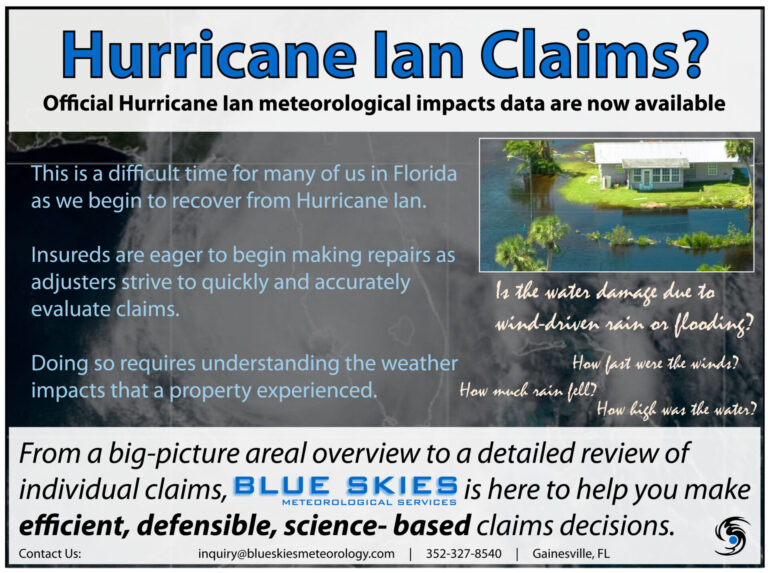Hurricane Ian Insurance Claims
Get above the surge (of claims) – improve the efficiency and accuracy of hurricane-related claims adjusting decisions while reducing the risk of costly litigation by incorporating forensic meteorology in your claims adjusting process.
Hurricane Ian roared ashore in southwestern Florida on September 28, 2022 as a powerful Category 4 storm. Ian produced a catastrophic storm surge along the coast, reported wind gusts up to 140 mph, and a swath of extreme rainfall that led to significant flooding across inland Florida. Hurricane Ian’s impacts were felt across the state of Florida as well as in Georgia, South Carolina, and North Carolina. Ultimately, Hurricane Ian resulted in over 150 fatalities and billions of dollars in property damage in the southeastern U.S.
Almost immediately after landfall, government agencies began collecting and reporting preliminary data related to storm impacts, and on April 3, 2023, after months of rigorous analysis and data quality control, the National Hurricane Center released their official Tropical Cyclone Report on Hurricane Ian.
A site-specific forensic meteorological analysis of Hurricane Ian’s impacts ensures that claims decisions are defensible and science-based, providing a fair and efficient outcome for both the insured and the insurer that limits the risk of litigation.
The following data are available now for analysis:
- Wind impacts – sustained wind speeds, wind gust speeds, and wind directions.
- Rainfall – rain gauge data as well as radar-estimated rainfall totals.
- Storm surge – tidal gauges and high water marks.
- Inland flooding – stream gauge data, preliminary storm reports, and satellite data.
- Observed storm damage – damage assessments, preliminary local storm reports, and post-storm aerial imagery
Based in Florida, we at Blue Skies experienced this storm firsthand. Please contact us with any questions you may have about our site-specific Hurricane Ian impacts analyses. Initial consultations are always free.

